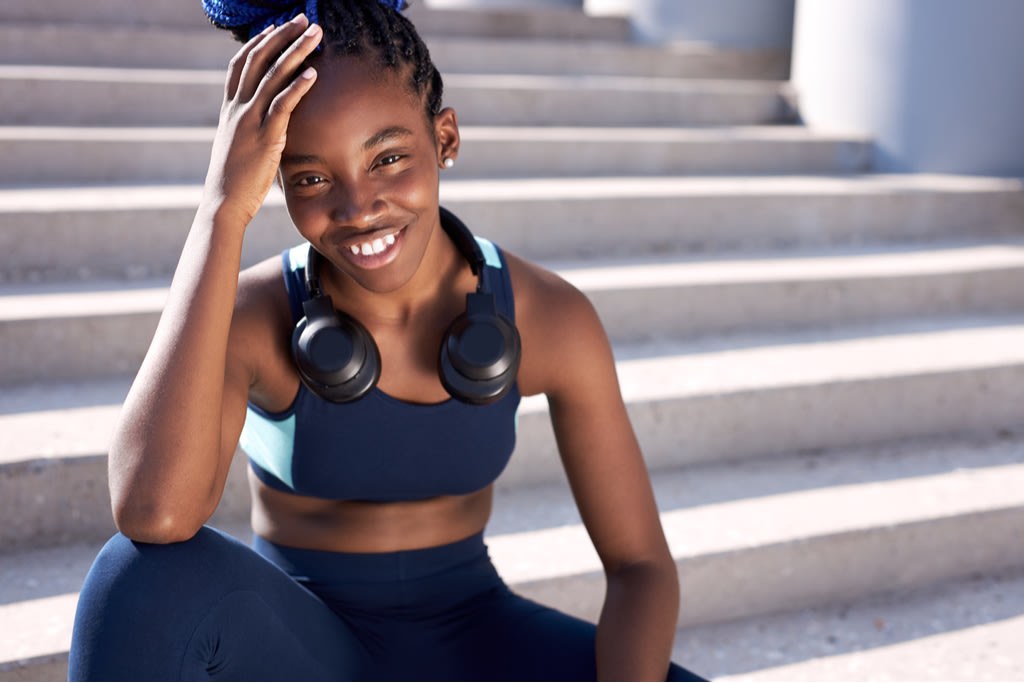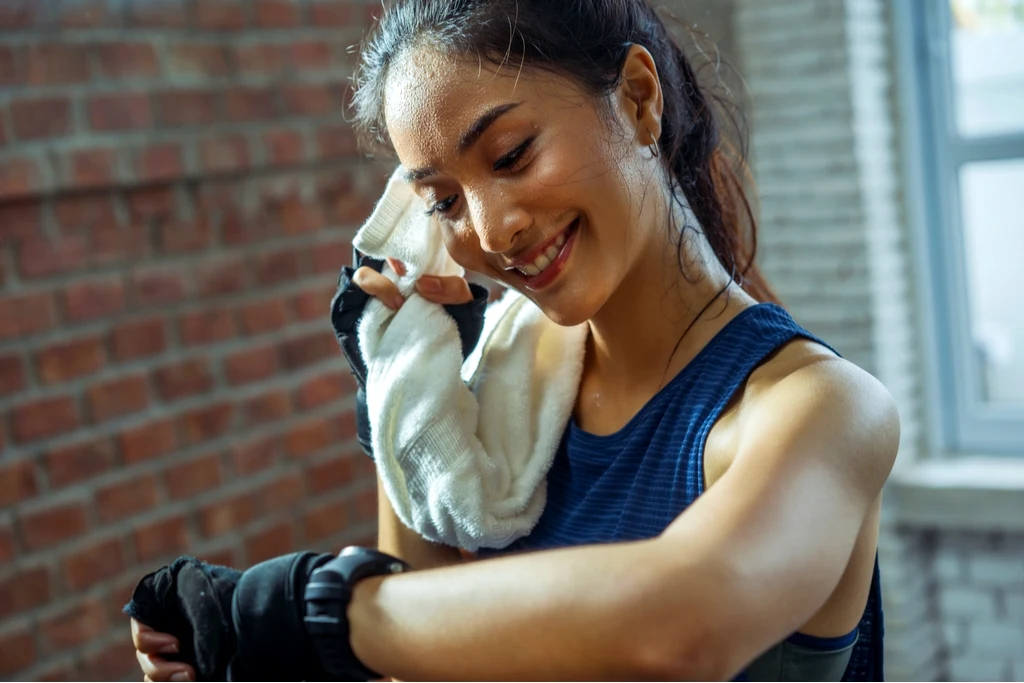Is Sweat Good For Your Hair?
Here's what sweat does to your hair and how to protect your locks.

November 3, 2020 - Updated September 29, 2025

There’s something so satisfying about working up a serious sweat, but we get it. When you’re sweating so much your hair is wet, gets greasy faster, ruins your styling or needs washing more often, it can become an annoyance or even a barrier to starting a workout in the first place.
Is all that sweat even good for your hair? And what can you do to look after it better before, during and after your workouts?
Here’s what you need to know.
Is sweat good for your hair?
When you work out, you’re inevitably going to get a build-up of sweat on your scalp (and the rest of your body). Your body is incredibly intelligent, and sweating is a healthy and natural response. Sweating from your scalp in particular can increase blood flow, unclog pores, flush out toxins and even support healthy hair growth.
Don’t worry - sweat itself is not harmful or damaging to your hair. It’s more about what you do before and after you get sweaty that can impact your hair health.
But the good news is there are a number of ways you can help to keep your hair in good shape while working out regularly.
The downsides of sweaty hair
Flaking, itchiness or dryness
Because sweat contains some salt and minerals, leaving it to dry on your scalp can lead to flaking, itchiness or irritation as it can mix with oils, bacteria and dead skin cells. Without proper care, the strands can also start to feel dry or brittle over time.
Colour fading
If you dye your hair, frequently sweating and washing your hair can lead to a faster fading of the colour.
Breakage
Wet hair can be more prone to breakage if you’re aggressively brushing it out post-workout, putting it in a tight style, or retying your ponytail between sets.
More frequent washing
Sometimes, we think about how much less we could afford to wash our hair if we didn’t work out. Excessive washing can cause damage and dryness, but there’s a few things you can do to avoid it (more on that in a sec).
It can be a barrier to exercise
It’s important to recognise how sweat can affect women in different ways. Research has shown that haircare can be a real barrier to exercising regularly, and a 2013 survey found that 40% of Black women avoid exercise due to hair-related issues.
For many Black women, a quick wash and go just isn't an option. Black hairstyles can be time-consuming and costly to maintain and certain styles such as complex braids and extensions can also add extra weight to your scalp.
Depending on your occupation, you might also need it in a particular style for work, and on days when you don’t have enough time to tame your sweaty strands, your workout is what gets sacrificed.

Tips to look after your hair
Inevitably, no matter what hair type you have, sweat is going to impact your hair health and style. But there are a number of ways you can protect your hair while also enjoying sweaty workouts every week.
Use dry shampoo, but always before your workout. Spraying it onto damp hair can make it cakey and greasy.
For curly or textured hair, use a treatment. Hair oils and treatments can help to reduce post-workout frizz and dryness, and prevent the salt in sweat from drying it out. You can also use a leave-in conditioning treatment or gel after your workout to restore moisture and help set your curls.
Wear a hair wrap or headband during your workout. This can help minimise sweat build-up in your scalp and absorb sweat around your forehead and hairline as you exercise. They also have the added benefit of keeping your hair off your face as you work out. Otherwise, keep a sweat towel handy to dry your face and hair. Hair wraps are particularly helpful if you have curly or textured hair — they help keep your hairstyle in shape and reduce frizziness. Just be sure not to wrap or tie it too tightly on your head.
Choose the right style. Braids can give your scalp more airflow and keep hair off your face, or a bun can prevent long hair from sticking to sweat on your face or neck. A high ponytail can also provide more airflow around your neck if that’s where you tend to sweat.
Buy good hair ties. Avoid hair ties with metal fastenings as they can cause snags and breakage, and instead opt for snag-free elastics, scrunchies and spiral coils.
Invest in a good conditioner, focusing on ends and mid-lengths to restore hydration. If your hair is coloured, investing in colour-protecting shampoo and conditioner is worthwhile.
Brush your hair after a workout. If you can, air out your scalp and give your hair a gentle brush. This can prevent the sweat from clogging your pores and distribute oils more evenly.
Style once dry. It’s not always possible, but styling and tying up wet hair can cause breakage.
Avoid washing daily. If you’re sweating every day, try using dry shampoo before workouts or quickly rinsing the roots with water.
Avoid gym shampoos. Unless your gym is bougie, the free shampoo isn’t usually a high-quality one. Bring your own or save your full wash for when you’re at home.
Lock after those locks
Sweat itself isn’t bad for your hair (and the benefits of exercise massively outweigh any damage), it’s more about what you do with your sweaty hair when you finish your workout.

A more empowered you starts with Sweat, and our editorial team is here to bring you the latest fitness tips, trainer recommendations, wellbeing news, nutritional advice, nourishing recipes and free workouts.
* Disclaimer: This blog post is not intended to replace the advice of a medical professional. The above information should not be used to diagnose, treat, or prevent any disease or medical condition. Please consult your doctor before making any changes to your diet, sleep methods, daily activity, or fitness routine. Sweat assumes no responsibility for any personal injury or damage sustained by any recommendations, opinions, or advice given in this article.
Wellbeing